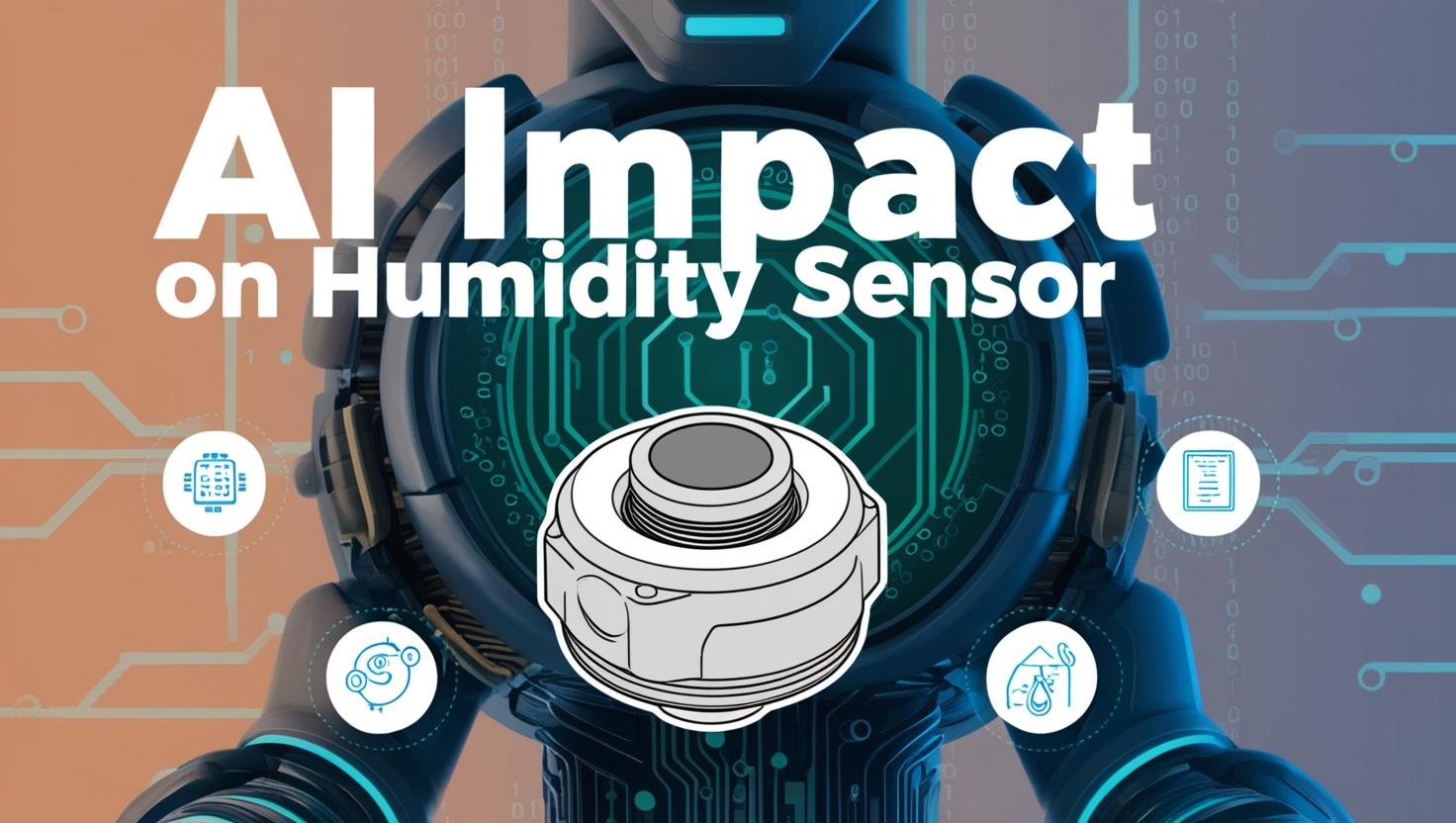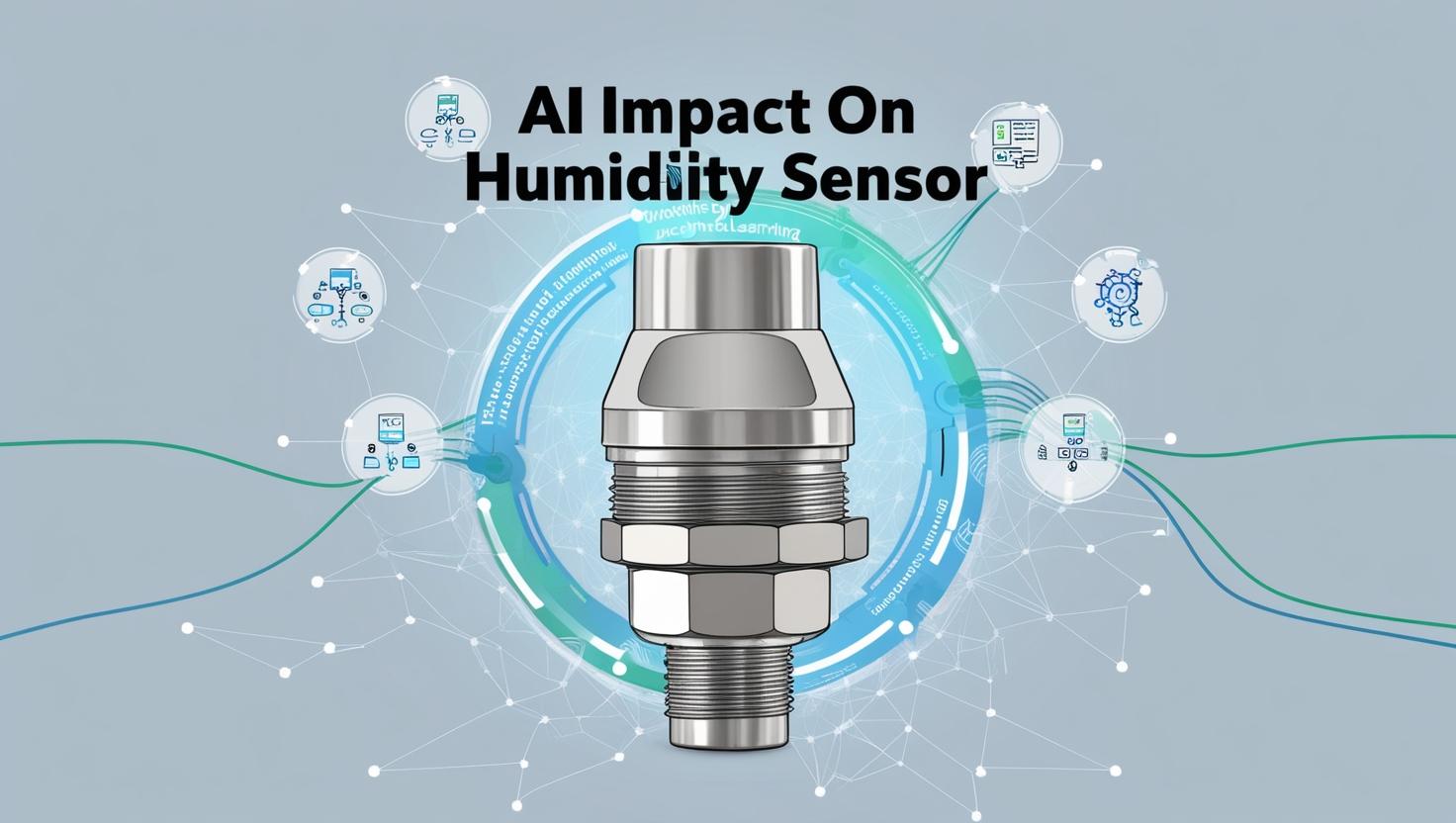The integration of artificial intelligence (AI) into various technological domains has sparked significant advancements, and the humidity sensor market is no exception. The
AI impact on humidity sensor market is reshaping how these devices function, offering enhanced precision, real-time data processing, and seamless integration with modern technologies like the Internet of Things (IoT). As industries such as automotive, healthcare, agriculture, and smart homes increasingly rely on accurate environmental monitoring, AI-driven innovations are proving to be a pivotal force in driving market growth. This article delves into the profound AI impact on humidity sensor market, exploring how AI technologies are enhancing sensor performance, unlocking new revenue streams, and addressing challenges in diverse applications.
Humidity sensors, which measure the moisture content in the air, have become indispensable in industries requiring precise environmental control. The incorporation of AI has elevated these sensors from simple measurement tools to intelligent systems capable of predictive analytics and adaptive calibration. By leveraging machine learning algorithms, AI-powered humidity sensors can analyze environmental patterns, adjust to varying conditions, and provide actionable insights, thereby revolutionizing their utility across sectors. The AI impact on humidity sensor market is not only enhancing the functionality of these devices but also driving their adoption in emerging markets where cost sensitivity and efficiency are paramount.

Evolution of Humidity Sensors and the Emergence of AI-Driven Innovations in Environmental Monitoring
Historically, humidity sensors have evolved from basic mechanical devices to sophisticated electronic components like capacitive and resistive sensors. These advancements have enabled more accurate and reliable measurements of relative and absolute humidity. However, the AI impact on humidity sensor market has introduced a new era of smart sensors that go beyond traditional capabilities. AI algorithms enable these sensors to process vast amounts of data in real time, offering predictive maintenance and dynamic calibration that reduce errors in high-humidity or temperature-variable environments. This is particularly critical in industries like semiconductor manufacturing, where precise humidity control is essential for maintaining product quality.
The integration of AI into humidity sensors has also facilitated their compatibility with IoT platforms, allowing seamless data exchange and remote monitoring. For instance, AI-powered sensors can detect subtle changes in environmental conditions and trigger automated responses, such as adjusting HVAC systems to optimize energy efficiency. This synergy between AI and IoT underscores the AI impact on humidity sensor market, as it enhances the sensors’ ability to provide real-time insights and improve operational efficiency across various applications, from industrial automation to smart home appliances.
Market Dynamics and Growth Projections Influenced by AI Integration in Humidity Sensors
The global humidity sensor market is experiencing robust growth, driven by the increasing demand for environmental monitoring solutions and the transformative AI impact on humidity sensor market.
AI’s role in this growth is multifaceted. By enabling predictive analytics, AI-powered humidity sensors can anticipate environmental changes and optimize system performance, reducing operational costs and improving sustainability. For example, in precision agriculture, AI-driven sensors monitor soil and air moisture levels to optimize irrigation, thereby enhancing crop yields and reducing water waste. The AI impact on humidity sensor market is also evident in the development of compact, digital sensors that simplify device designs and improve integration into smart home systems, further driving market demand.
AI-Powered Advancements in Sensor Accuracy and Performance Optimization
One of the most significant aspects of the AI impact on humidity sensor market is the enhancement of sensor accuracy and performance. Traditional humidity sensors often struggled with calibration in dynamic environments, leading to measurement errors. AI addresses this challenge by embedding machine learning algorithms that enable sensors to adapt to varying conditions. These algorithms analyze historical and real-time data to recalibrate sensors dynamically, ensuring consistent accuracy even in high-humidity or temperature-variable settings.
In industrial applications, such as pharmaceutical manufacturing, AI-powered sensors provide precise measurements of absolute humidity, which is critical for maintaining optimal production conditions. By integrating temperature and pressure data with moisture measurements, these sensors deliver comprehensive insights that enhance process efficiency. The AI impact on humidity sensor market is thus transforming sensors into intelligent tools that not only measure but also predict and adapt, ensuring superior performance across diverse applications.
Integration of AI with IoT for Enhanced Connectivity and Real-Time Data Processing
The convergence of AI and IoT has been a game-changer for the humidity sensor market. The AI impact on humidity sensor market is particularly evident in the seamless integration of sensors with IoT platforms, enabling real-time data exchange and remote monitoring. AI-powered sensors can process large volumes of data collected from multiple sources, providing actionable insights that enhance decision-making. For instance, in smart homes, these sensors can communicate with HVAC systems to maintain optimal humidity levels, improving energy efficiency and occupant comfort.
In industrial settings, AI-driven IoT integration allows for continuous monitoring of environmental conditions, reducing the need for manual intervention. This is particularly valuable in sectors like food processing, where precise humidity control is essential to prevent contamination and ensure product quality. The AI impact on humidity sensor market is driving the development of interconnected systems that enhance automation, streamline operations, and support sustainability goals by optimizing resource usage.
Applications of AI-Driven Humidity Sensors Across Diverse Industries
The AI impact on humidity sensor market has expanded the applications of these sensors across a wide range of industries. In healthcare, AI-powered humidity sensors are used in biomedical analysis and cleanroom environments to maintain precise humidity levels, ensuring the integrity of medical equipment and pharmaceuticals. In agriculture, these sensors enable precision farming by monitoring soil and air moisture, allowing farmers to optimize irrigation and improve crop yields.
In the automotive industry, AI-driven sensors are integrated into climate control systems to enhance passenger comfort and prevent fogging on windows. Similarly, in smart homes, these sensors contribute to energy-efficient HVAC systems and air quality monitoring. The AI impact on humidity sensor market is also evident in industrial applications like semiconductor manufacturing, where precise humidity control is critical for maintaining production quality. By addressing the specific needs of these industries, AI-powered sensors are unlocking new opportunities for market growth.
Challenges and Solutions in AI Integration for Humidity Sensors
While the AI impact on humidity sensor market is overwhelmingly positive, it is not without challenges. One significant hurdle is the complexity of standardizing sensor designs across industries with diverse compliance requirements. For instance, pharmaceutical and agricultural sectors have different environmental monitoring standards, which complicates sensor calibration and increases research and development costs. However, AI offers solutions by enabling flexible sensor technologies that adapt to varying compliance needs without compromising performance.
Another challenge is the high cost of AI integration, particularly in price-sensitive emerging markets. To address this, companies are investing in cost-effective AI solutions, such as miniaturized digital sensors that reduce production costs while maintaining high performance. The AI impact on humidity sensor market is thus driving innovation in sensor design, making them more accessible and efficient for a broader range of applications.
Competitive Landscape and Strategic Innovations in the AI-Driven Humidity Sensor Market
The AI impact on humidity sensor market has intensified competition among key players like Honeywell International, Sensirion AG, and TE Connectivity. These companies are investing heavily in AI research to develop advanced sensor technologies that offer superior accuracy and integration capabilities. Strategic partnerships and acquisitions are also common, as companies seek to expand their AI-integrated sensor portfolios and gain a competitive edge.
Innovations such as printed humidity sensors, which leverage AI for real-time data analysis, are gaining traction in flexible and wearable electronics. These sensors, produced using techniques like inkjet and screen printing, are lightweight and customizable, making them ideal for applications in healthcare and consumer electronics. The AI impact on humidity sensor market is thus fostering a highly dynamic and competitive landscape, with companies focusing on differentiation through AI-driven innovations.

Future Trends and Opportunities in the AI-Enhanced Humidity Sensor Market
The future of the humidity sensor market is poised for significant growth, driven by the ongoing AI impact on humidity sensor market. Emerging trends include the integration of AI with generative AI (Gen AI) to enhance sensor intelligence, enabling applications in autonomous vehicles, precision agriculture, and smart healthcare systems. As environmental monitoring becomes increasingly critical due to climate change, AI-driven humidity sensors will play a pivotal role in ensuring sustainability and efficiency.
Opportunities in emerging markets are also significant, as AI-driven innovations address cost sensitivity and drive adoption in regions like Asia-Pacific, which accounted for the largest market share in 2023. The development of ultra-thin and miniaturized sensors, powered by AI, is expected to further expand market potential, particularly in consumer electronics and wearable devices. The AI impact on humidity sensor market is thus setting the stage for a future where intelligent sensors are integral to global sustainability and technological advancement.
The Transformative Potential of AI in the Humidity Sensor Market
The AI impact on humidity sensor market is undeniable, as it transforms these devices into intelligent, adaptive systems that meet the evolving needs of industries worldwide. From enhancing sensor accuracy and IoT integration to enabling predictive maintenance and expanding applications, AI is driving significant growth and innovation in the market. As companies continue to invest in AI-driven technologies, the humidity sensor market is poised for a future where precision, efficiency, and sustainability are paramount. By embracing the AI impact on humidity sensor market, businesses can unlock new opportunities, address challenges, and lead the way in environmental monitoring and technological advancement.
Frequently Asked Questions (FAQs)
What is the AI impact on humidity sensor market?
The AI impact on humidity sensor market refers to the integration of artificial intelligence technologies, such as machine learning and IoT, to enhance the accuracy, efficiency, and connectivity of humidity sensors, driving their adoption across industries like healthcare, agriculture, and smart homes.
How does AI improve humidity sensor performance?
AI improves humidity sensor performance by enabling real-time data processing, predictive maintenance, and adaptive calibration. Machine learning algorithms analyze environmental patterns to ensure accurate measurements, even in dynamic conditions, enhancing overall sensor reliability.
Which industries benefit from AI-driven humidity sensors?
Industries such as healthcare, agriculture, automotive, semiconductor manufacturing, and smart homes benefit from AI-driven humidity sensors. These sensors provide precise environmental monitoring, optimize processes, and enhance energy efficiency in various applications.
What are the challenges of integrating AI into humidity sensors?
Challenges include standardizing sensor designs across diverse industries, managing high development costs, and ensuring compatibility with varying compliance requirements. AI addresses these by enabling flexible, cost-effective sensor technologies that adapt to specific needs.
What is the future outlook for the AI-driven humidity sensor market?
The future outlook is promising, with the market projected to grow significantly due to AI-driven innovations. Emerging applications in autonomous vehicles, precision agriculture, and smart healthcare, along with advancements in miniaturized sensors, will drive further expansion.
